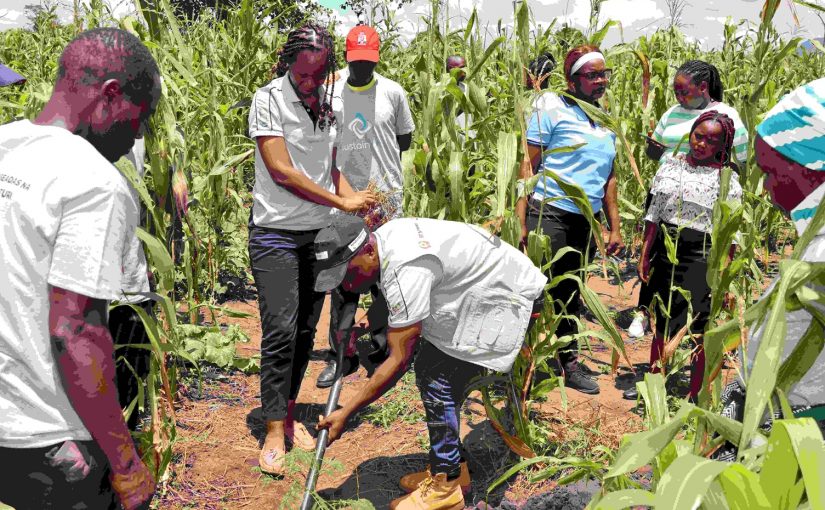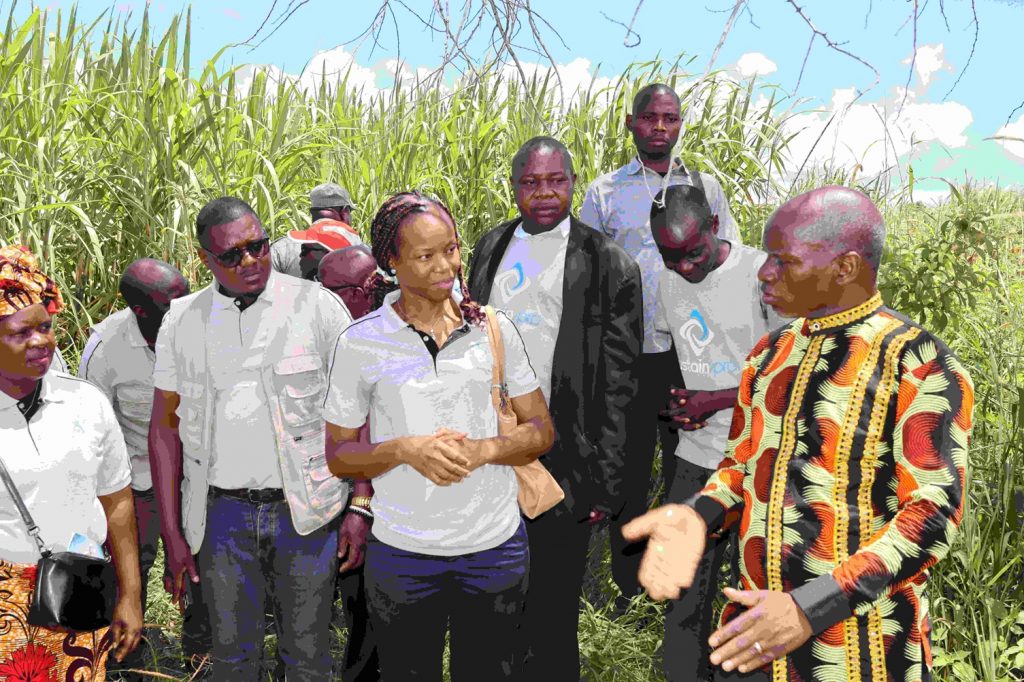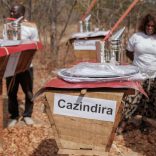Talks to open wildlife corridors between South Africa, Mozambique, and eSwatini ‘advanced’ - : ...
IUCN in Mozambique supports Bárue district in restoring the source of the Cagole river in Báruè

The restoration for the source of the Cagole river is part of a broader effort to strengthen the ecological resilience of the Báruè district, including the promotion of agricultural facilities that allow for soil restoration and the increase of both floristic and faunal biodiversity.[ Photo: IUCN]
The commitment to the conservation of natural resources and ecological resilience was reaffirmed on March 7, 2025, with the planting ceremony of the first tree for the restoration of the source of the Cagole river, in the district of Báruè, province of Manica. The initiative, promoted by IUCN within the framework of the SUSTAIN Pro project, was attended by the District Administrator of Báruè, community leaders, partners of ADEM-Agencia de Desenvolvimento económico de Manica, SDAE-Servico Distrital de Actividades Economicas and members of the local community.
The source of the Cagole River is a vital source of water for smallholders and local communities, but it has suffered degradation due to deforestation, fires, and unsustainable agricultural practices. The restoration of this area was identified as a priority by the community leaders themselves and validated by the Biodiversity Assessment and Restoration Opportunities Report, which also highlighted the urgency of restoring the source of the Inhazonia River and the Serra Choa, the later classified as a Key Biodiversity Area (KBA). Serra Choa faces significant challenges, including cattle grazing, commercial macadamia production, shifting cultivation, and recurrent fires, but it still maintains forest remnants essential to the region’s ecological connectivity.
In his speech, Mr. Davide Franque the District Administrator of Báruè highlighted that the protection of springs and riverbanks is not only an environmental necessity, but also a legal obligation provided for in Mozambican legislation. He reinforced the importance of community and private sector involvement in the preservation of natural resources, ensuring that the restoration of the source of the Cagole River is sustainable in the long term.
In turn, Maria Matediane, the Project Manager of SUSTAIN Pro from IUCN Mozambique office emphasized how this initiative aligns with the project approach in responding to the integration of biodiversity conservation into economic growth. In addition to the environmental impact, the initiative creates direct benefits in the coming of the families by introducing a Payments for Ecosystem Services (PES) scheme. This will encourage the Cagole water spring guardians, members of the Natural Resources Management Committee (NRMC), to protect and maintain the planted trees.

The restoration for the source of the Cagole river is part of a broader effort to strengthen the ecological resilience of the Báruè district, including the promotion of agricultural facilities that allow for soil restoration and the increase of both floristic and faunal biodiversity.
SUSTAIN Pro is a NORAD financed program implemented by International Union for Conservation of Nature (IUCN) in Partnership with Manica Economic Development Agency (ADEM) in strong coordination with the Provincial Director of Agriculture and Fishing (DPAP) that aims to promote sustainable and resilient productive landscapes, balancing economic growth, biodiversity conservation, and social inclusion.













Leave a Reply
Be the First to Comment!
You must be logged in to post a comment.
You must be logged in to post a comment.